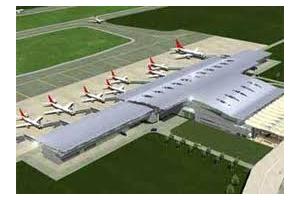
New Delhi, October 8: Giving a push to aviation infrastructure development, Government is planning to build 10-15 greenfield airports and modernising 50 others in the non-metro cities over the next few years.
"About 50 non-metro airports are being modernised within the next 2 years and overall 10-15 new greenfield airports are being planned," Civil Aviation Minister Ajit Singh told reporters on the sidelines of the 49th Conference of Directors General of Civil Aviation of Asia-Pacific region here.
Maintaining that the civil aviation sector in India was witnessing an annual growth of 9%, he said, "We expect a double digit growth in air traffic in the next few years."
Asked about the basis of his assessment, Singh said, "The huge middle class is growing, trade is growing and India should achieve at least 6% GDP growth now. There may have been a temporary setback as we see a decline now, but air traffic is expected to grow substantially."
Earlier addressing the conference, he said the government had initiated a major process of modernising existing airports and developing greenfield ones "through a mixed strategy of public sector, private sector, joint ventures and public-private partnership" to accommodate the growing air traffic.
While airports at Delhi, Mumbai, Bangalore and Hyderabad had been built with private sector participation, "new airports are ready for commissioning in Chennai and Kolkata very soon," he said, adding that the government now permits up to 100% FDI in greenfield airports.
Referring to the controversial carbon tax being imposedby the European Union (EU) which is being opposed by India and a large number of countries, the Minister said, "We would request the delegates to oppose any unilateral environment measures imposed by a State or group of States like the EU-ETS (Emission Trading Scheme)."
He appealed to the delegates to "work with International Civil Aviation Organisation to evolve global environment protection on the basis of equity and consensus following the broad consensus obtained" in the United Nations fora.
Observing that India was a "major corridor" between the East and the West, Singh said the final operational phase and certification GAGAN (GPS Aided Geo- Augmented Navigation) system, developed jointly by Airports Authority of India and Indian Space Research Organisation, was expected to be completed in June 2013.
"GAGAN has a footprint overlapping with European Satellite Based Augmentation System (SBAS) on the West and Japanese SBAS on the East," he said.
Asked whether the proposed venture of the Kerala government, Air Kerala, would be allowed to fly abroad, the Minister said like all start-up airlines, it would need to fulfil all criteria for various government approvals. "We will give sympathetic consideration (to Air Kerala) but rules and regulations have to be followed."
The three-day conference is being attended by top global aviation officials, including ICAO Secretary General Raymond Benjamin, apart from aviation regulatory bodies of over 45 countries and six professional bodies.
The theme of the conference is 'Managing Air Transport Growth in the Asia Pacific Region through a Collaborative Approach to Safety, Security and Sustainability', which would also review and exchange information, enhance co-ordination of civil aviation activities and harmonise and coordinate implementation of standards and procedures in the region.





Comments
Add new comment